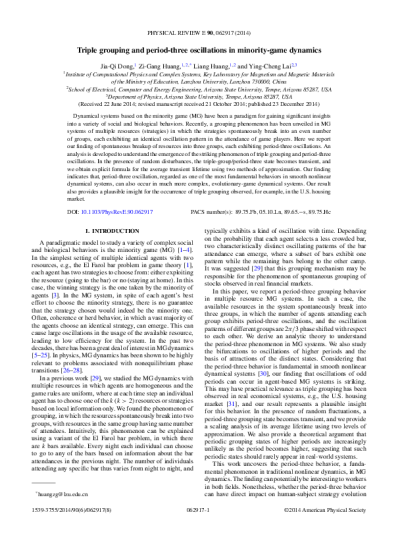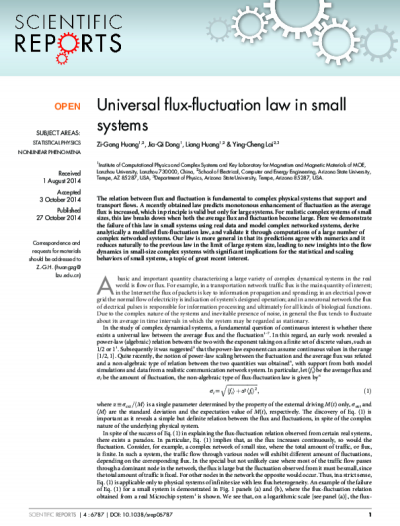Optimization and Resilience of Complex Supply-Demand Networks
Supply-demand processes take place on a large variety of real-world networked systems ranging from power grids and the internet to social networking and urban systems. In a modern infrastructure, supply-demand systems are constantly expanding, leading to constant increase in load requirement for resources and consequently, to problems such as low efficiency, resource scarcity, and partial system failures. Under certain conditions global catastrophe on the scale of the whole system can occur through the dynamical process of cascading failures. We investigate optimization and resilience of time-varying supply-demand systems by constructing network models of such systems, where resources are transported from the supplier sites to users through various links. Here by optimization we mean minimization of the maximum load on links, and system resilience can be characterized using the cascading failure size of users who fail to connect with suppliers.
We consider two representative classes of supply schemes: load driven supply and fix fraction supply. Our findings are: (1) optimized systems are more robust since relatively smaller cascading failures occur when triggered by external perturbation to the links; (2) a large fraction of links can be free of load if resources are directed to transport through the shortest paths; (3) redundant links in the performance of the system can help to reroute the traffic but may undesirably transmit and enlarge the failure size of the system; (4) the patterns of cascading failures depend strongly upon the capacity of links; (5) the specific location of the trigger determines the specific route of cascading failure, but has little effect on the final cascading size; (6) system expansion typically reduces the efficiency; and (7) when the locations of the suppliers are optimized over a long expanding period, fewer suppliers are required. These results hold for heterogeneous networks in general, providing insights into designing optimal and resilient complex supply-demand systems that expand constantly in time.
- Author (aut): Zhang, Si-Ping
- Author (aut): Huang, Zi-Gang
- Author (aut): Dong, Jia-Qi
- Author (aut): Eisenberg, Daniel
- Author (aut): Seager, Thomas
- Author (aut): Lai, Ying-Cheng
- Contributor (ctb): Ira A. Fulton Schools of Engineering

